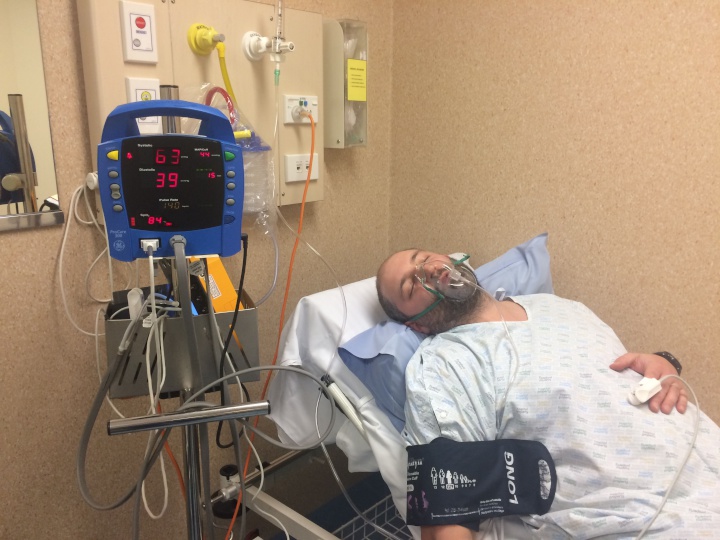Realistic, low-cost medical simulator developed
Realistic, low-cost medical simulator developed by Christchurch team

Simulations in healthcare are
great for training, but can be expensive.
A team headed by Christchurch Hospital anaesthetic specialist Dr Daniel Hartwell has designed a low-cost, highly-realistic simulator that plugs in to everyday medical equipment.
Previous medical simulation systems tended to be very expensive and/or unable to be transported easily.
“Nurses and technicians are all part of the same team, and so everyone needs access to the same system,” Daniel says.
Most systems use mock monitors, designed to look like the real thing.
“The issue with that the mock monitor and how it behaves is not the same as the ones actually used, so their value for training is limited,” Daniel says.
Biomedical Engineer Michael Sheedy from the Canterbury District Health Board (Canterbury DHB) Medical Physics & Bioengineering Department helped Daniel develop a system that would use the same equipment clinical staff used every day.
“You wouldn’t train a pilot in an Airbus A380 and then expect them to fly a 747,” Michael says.
At that stage, Daniel had been using calibration devices to run simulations of his own design. These devices are used to check equipment, and can be used to make certain displays appear on medical monitors.
“Dan was like a DJ, controlling all of these pieces of kit to control the monitors,” Michael says.
Throughout 2016 and 2017, the pair developed software to allow someone to control the calibration device wirelessly from a tablet computer. They envision creating a series of modules to expand the usefulness of the simulator.
The first module, called RESPIRECO2, is a device that generates carbon dioxide to imitate different human breathing patterns, which show up on real monitors.
Daniel has conducted simulations for anaesthetics teams using partial and full mannequins, and actors. He has tested the simulator in surgical theatres, the intensive care unit, ambulances, and a medical transport helicopter.
The simulator is also used for training in Christchurch Hospital’s Emergency Department, and futher testing is being carried out at different hospitals around New Zealand and in Australia.
The Hartwell Simulator has been developed in partnership with Canterbury DHB as part of a focus on using technology to improve healthcare for patients and staff.
ENDS


 The Conversation: ‘Cold Violence’ – A Hidden Form Of Elder Abuse In New Zealand’s Chinese Community
The Conversation: ‘Cold Violence’ – A Hidden Form Of Elder Abuse In New Zealand’s Chinese Community Sport Manawatu: Nominations Open For The 2025 Tararua Sports Awards
Sport Manawatu: Nominations Open For The 2025 Tararua Sports Awards PHCC: Not All Upcycled Food Is Created Equal - What Is Sustainable?
PHCC: Not All Upcycled Food Is Created Equal - What Is Sustainable? Prostate Cancer Foundation: Foundation Hails Select Committee Support For Prostate Screening Pilots
Prostate Cancer Foundation: Foundation Hails Select Committee Support For Prostate Screening Pilots Cross Street Music Festival: First Artists Announced For 2025 Cross Street Music Festival
Cross Street Music Festival: First Artists Announced For 2025 Cross Street Music Festival Bowls New Zealand: Lawson And Grantham Qualify To Keep Bowls Three-Peat Hopes Alive
Bowls New Zealand: Lawson And Grantham Qualify To Keep Bowls Three-Peat Hopes Alive